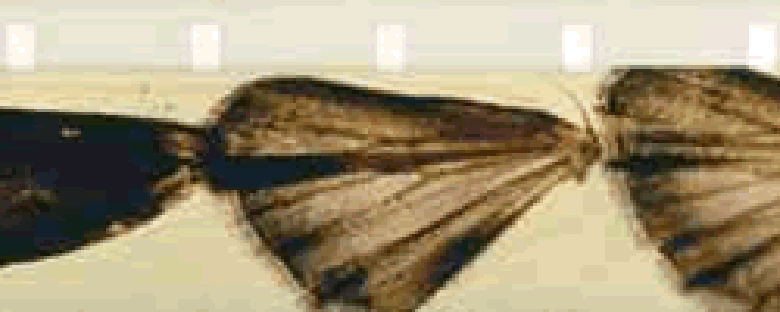It is persistently unclear if the work of Stan Brakhage qualifies as traditional filmmaking (film is a classification the artist himself resists in generalizing his work). It is a title necessary only for the purpose of generic classification, and in this case it is misrepresentative, as Brakhage’s work only marginally honors the gamut of filmmaking. And even so, the title does little foretell the variety of his work.
To illustrate this dilemma of classification, I would cite Mothlight, a 1963 film comprised of organic material adhered between strips of tape the same width of 16mm film stock, a montage. Imagine a single image an inch wide and several yards tall, divided and viewed in subsequent increments. The three minute work is excitedly paced and primarily non-objective. The work is engaging and intricate (individual frames bear an intended composition) — a triumph as an art and atypical as a film.
Some of Brakhage’s work qualifies as documentary, and even those are atypically constructed and composed (and most of them are silent). 1964’s Window Water Baby Moving documents the home birth of his first child. As an early work, it exhibits his signature superimposition and visual repetition. It is a frank work of powerfully affronting beauty. Similar is The Act of Seeing With One’s Own Eyes, which consists of compositionally abstracted and close-up shots of graphic autopsies. Both works document actual people and events, and each bears a highly subjective view (body parts are close and abstracted underneath Brakhage’s lens). They have a consistent visual style and, because their graphic subjects are shown without apprehension, are deftly atypical documentaries; it is an important assessment, as they are two of his more traditionally standardized films.
Additionally, the two films exhibit a formidable breadth in Brakhage’s approach. One concerns the beginning of life; the second concerns its end. Both subjects are treated with earnest devotion — shooting The Act of Seeing With One’s Own Eyes Brakhage admits to gripping his camera as fervently as he ever has. Watching each work is a comparable experience, tangibly visceral and often frightening. It is, however, an affront justified by Brakhage’s philosophy, a method of being present at his child’s birth and a confrontation of his fear of death. His approach — its impactive frankness — transcends these familiar issues.
Brakhage’s tactic is routinely varied, from abstract documenting to collage and painting, sampled in twenty-six films included on The Criterion Collection’s by Brakhage: an anthology. Many of his works are rapid collages with individual frames that contrast the ones before and after. This format (and despite his variety, each of Brakhage’s works here bear an identifiable signature) requires a strict attention. The triumph of this set, despite the work’s requirement for projection, is that individual frames may be studied (I frequented the pause button, and studied excerpts of each film in slow-motion). There is an argument that video is an imperfect forum for viewing Brakhage’s works (cited by both he and Fred Camper in his liner essay), that it disallows Brakhage’s metaphysical commentary: that a film projector disrupts the nature he produces (this thought is especially in regard to the aforementioned Mothlight, and works similar to it).
The final argument towards Brakhage’s work as a filmmaker is exampled, again, in Mothlight. He tells of how the work is spawned by his inability to successfully film moths dancing about an open flame. They would burn in contact with their drawing obsession, and dead wings would collect on Brakhage’s lens. Assembling their body parts is a figurative method of resurrecting them. Appropriately, subsequent images in the film mimic a moth’s flight, and it comprises the insect’s natural familiarities. It is a work that mimics a life, clearly a masterpiece of creative innovation, and similarly formidable for its thought.
We don’t do comments anymore, but you may contact us here or find us on Twitter or Facebook.



